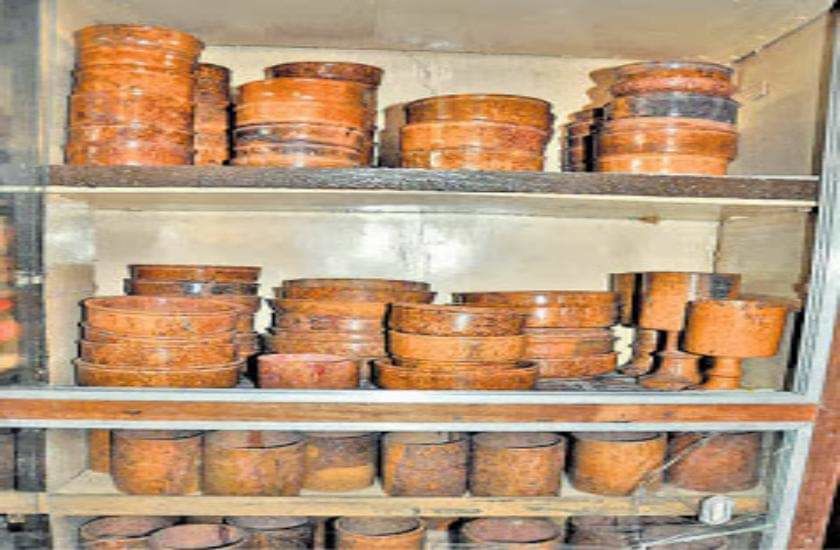We’ve all struggled to set curd when we’ve run out of the precious ‘starter’. Not if you live in Habur village of Jaisalmer in Rajasthan, though. The local residents use a special stone vessel, which is now growing in popularity even outside the state and country, to turn milk into curd without a starter. The Habur stone, as it is called, is golden yellow-brown and bears exquisite naturally-formed patterns; anything made of it is both functional as well as artistic.
The special stone is found in Habur, 50 kilometres (km) from Jaisalmer and over 600 km from the state capital Jaipur. It is also known as Haburia Bhata. Jalam Singh, a resident of Habur, explained to Gaon Connection that village elders have told them that the topography of the village was very different a long time ago (millions of years ago). “There used to be a sea here, and these stones date back to that period. As they emerge from the heart of the earth, this particular stone contains numerous minerals and remnants of fossils.”
These days, following the Habur story travelling far and wide thanks to social media, many tourists stop by to buy the vessels, he added. The villagers also make sculptures and toys with the Habur stone.
There are reports of research being conducted to understand this phenomenon. YouTube has some videos where people explain the process.
Rajbala Rathore, sarpanch of Habur village, told Gaon Connection that he was pleasantly surprised to witness the miracle stone convert milk to curd. “I wish news of this reaches the world and the stone becomes an additional reason to visit Jaisalmer.”
Initial research on the Habur stone has revealed that it contains amino acids, phenylalanine, tryptophan and tyrosine. “These help in curd formation, and so one doesn’t need to add anything else,” Rathore said. All one has to do is leave milk overnight in a vessel made of this stone. In the morning, sweet curd with an earthy aroma is ready.
However, some research says that it is possible that existing bacteria in the pores of the stone is the reason the milk curdles without a starter.
This then, is the curious case of something creamy, but firmly set in stone!


















